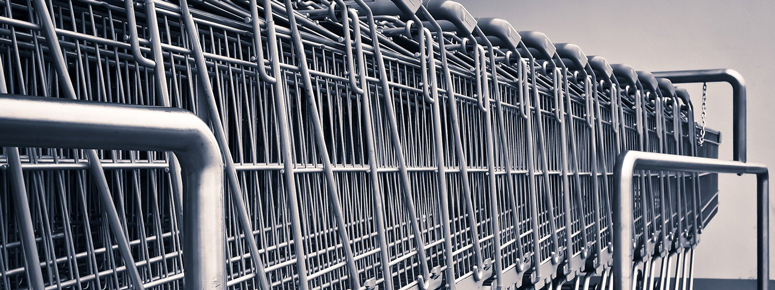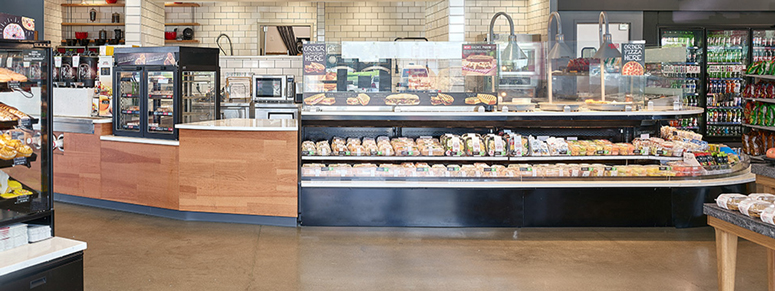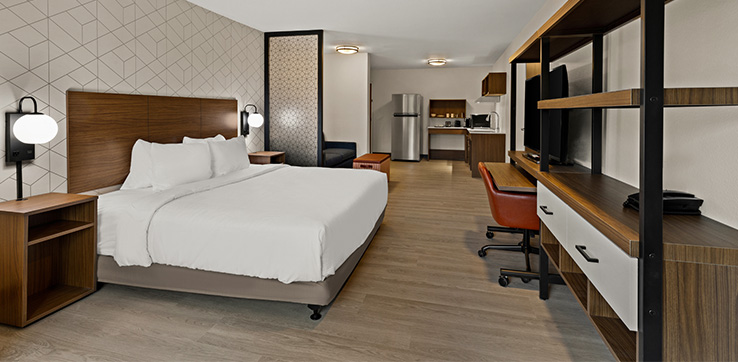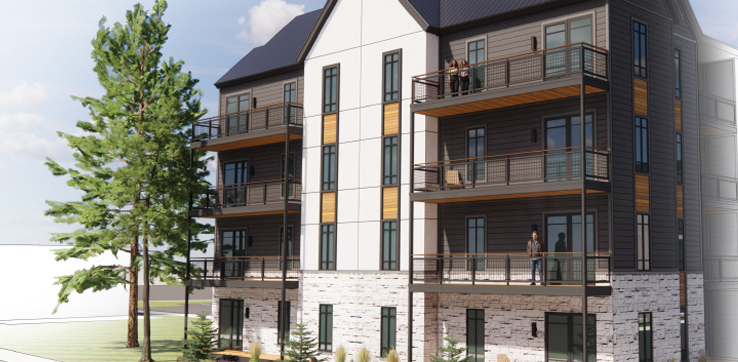In re-imagining a post-pandemic grocery store, BRR team members recently produced a diagrammatic view of key components and circulation patterns that represent current and emerging food shopping habits. (Find that article here: ‘Should grocers rethink their stores’ formats?’)
With trends in food safety and convenience impacting store layouts and operations, and with new expectations from grocers and their customers, BRR’s food retail designers are rethinking the front end of the store.
Here are five factors which have the potential to impact the front end layout of a traditional grocery store:
Convenience
Although some smaller format stores have opted for a single entry and exit point, COVID-19 has prompted businesses to shift to a dual-entry/exit format where the flow of customers can be distanced. Multiple entrances also allow for more convenience to the customer as they can park closer to their in-store destination. For grocers, this calls for increased monitoring and anti-theft measures at multiple points, as well as cart storage by each entrance. Customers seeking convenience will expect their most purchased products to be located only a few steps from the door.

Sanitation
The entry vestibule serves a different purpose lately as it relates to the health and safety of customers . Whether a store associate wipes them down (at increased labor cost) or the store provides self-serve disinfecting wipes for customer use, shoppers expect their carts to be sanitized. Then, the grocer must separate clean carts from used carts within the vestibule. With the significant increase in online grocery pickup, we are analyzing how this affects the number of carts needed, and if there are devices to automate the sanitation process.
Although many retailers have provided hand sanitizer stations at the store entrance, there may be a demand for customer hand washing sinks as well. Most of these measures will need to be retrofitted into the existing entry area. Grocers are exploring ways to redesign the vestibule and front-end operations to assure customers that health and safety measures are being addressed upon entry to the store.
Efficiency & Flow
Whether pre- or post-pandemic, shoppers are still very much on the go. This push for convenience is driving grocers to provide more prepared foods, and grab-and-go meals, at the front of the store. This prompts an increased need for fast and efficient self-checkout, as well as minimized traffic and streamlined circulation. Our team has explored the shift of prepared foods departments all the way to the front of the store, with the possibility to engage in sidewalk and foot traffic. While this layout best suits urban environments, it suggests a convenience store component would also be successful for traditional grocery stores.

Accelerated Checkout
The desire for quick and convenient check-outs is rapidly increasing. While self-checkouts monitored by one or two employees are present in many stores, the pandemic has forced grocers to limit the number of people in contact with shoppers and their items.
The redesigned “bullpen” concept creates an opportunity for faster checkout based on an efficient system of controlled entry and exit points, and an increased number of larger, belted check stands. Cashier-less checkouts are also gaining interest as grocers look to this technology to cater to the time-strapped shopper. Both approaches help the shopper check-out faster and provide necessary control points. Our team often seeks solutions which will avoid creating pinch-points, or bottlenecks, at controlled entry and exit locations.
Flexible Dining
Food is social, yet the need to maintain physical distance has put a damper on in-store dining experiences. We see the potential to create open-air outdoor dining spaces that engage both the store and sidewalk traffic. Also, with the increased demand for online order pick-up changing how vehicular traffic is directed around the store site, there may be an opportunity to expand the area directly in front of the store for outdoor seating and merchandising.
By rethinking the front end of the grocery store, we see opportunities to integrate the continuing demand for grocery shopping convenience and newly established habits and expectations of post-pandemic shoppers. The result will be a new design aesthetic which creates a safe and streamlined grocery food retail establishment.
About the author:
Katie Beckwith, AIA, graduated from the University of Kansas with a Master of Architecture degree. Since joining BRR in 2016, Katie has worked on a wide array of projects in the retail, grocery and restaurant markets. Part of her unique skill set includes navigating the intricacies of designing for grocery spaces within multi-story and mixed use buildings along with the individual challenges of coordinating all the various disciplines that come with those complex building types. Email her.



